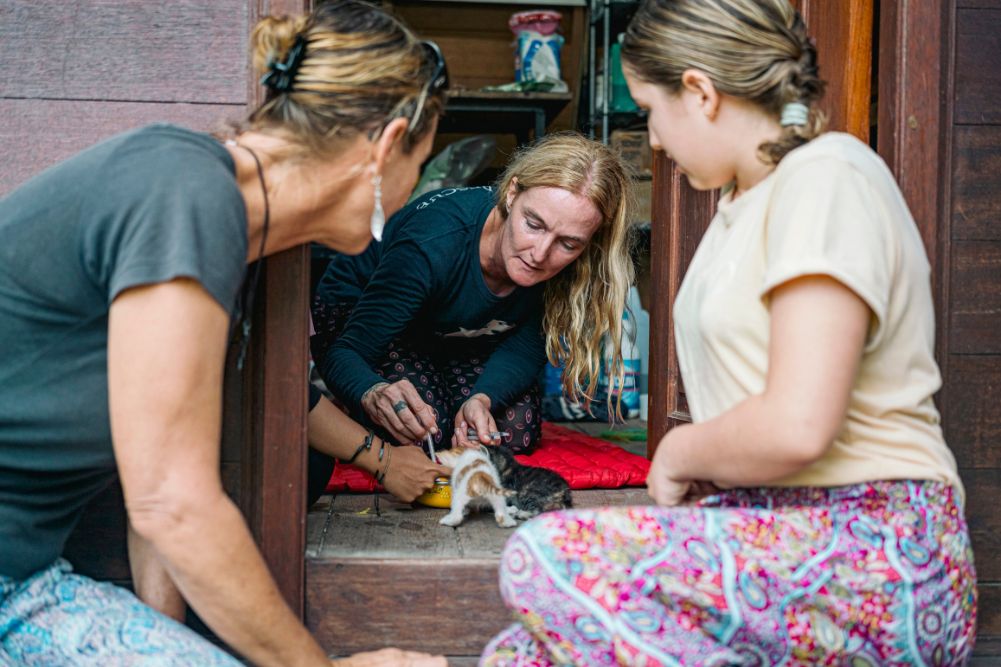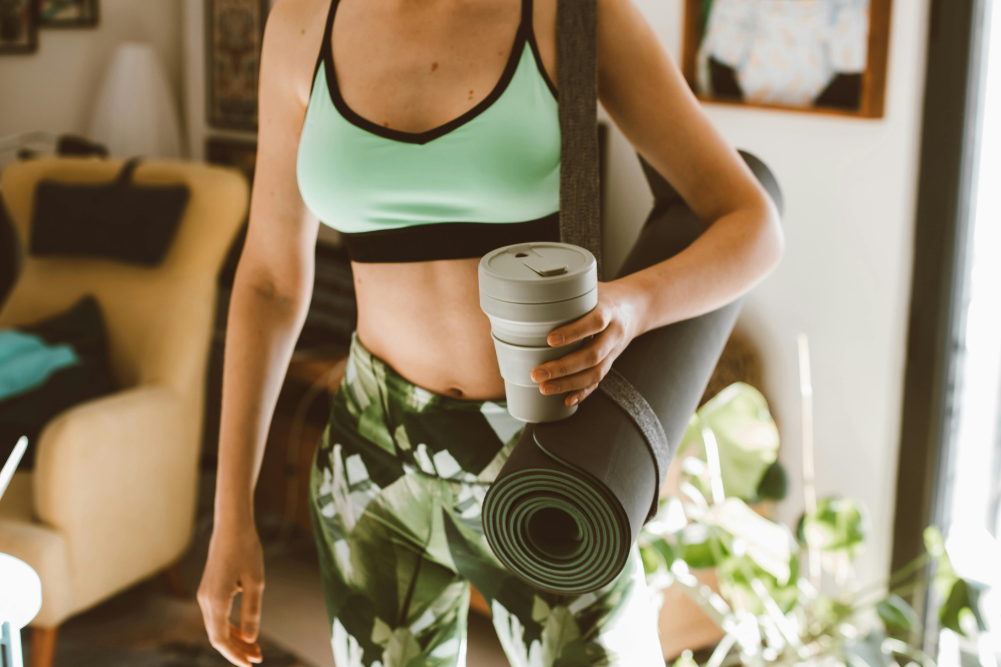Easy steps for living a greener life
A lot of mainstream media attention is being given to taking better care of the planet. Every day, a new article appears referring to global warming and its catastrophic effects. Personally, I was convinced the mood had changed when I saw Kochie on Channel Seven’s (Sydney) Sunrise program urging the Federal Government to start investing in alternative energy schemes as part of their Cooling the Globe initiative. Finally, it seems, there’s a groundswell of support to address the problem. Just in the nick of time.
Home truths
If you caught Al Gore’s climate change documentary An Inconvenient Truth, you’ll realise one of the main contributors to global warming is the use of fossil fuels to create energy (see Martin Oliver’s article on climate change in this issue). These fuels include coal for electricity and oil for petroleum. Burning these fuels creates damaging greenhouse-forming gases, mainly carbon dioxide. The gases form an atmospheric layer that traps heat between it and the Earth. As we now know, this artificial increase in the earth’s temperature is tampering with the way the planet functions. Hence there are melting snowcaps, never-ending droughts and severe weather events.
The major contribution we can make to the problem on a personal level is to reduce our insatiable demand for electrical energy. Have a think about it: air-conditioners, home entertainment systems, appliances, lighting — you name it, electricity provides energy for most of your household needs. Do you know how electricity is mainly provided in Australia? It comes from burning that abundant but environmentally unsustainable fossil fuel called coal.
The Australian Greenhouse Office (www.ago.gov.au) provides statistics that show where our electrical energy use is concentrated:
- 39 per cent of household energy is in heating/cooling.
- 27 per cent is in water-heating.
- 12 per cent is in general electrical appliances.
- 9 per cent is in refrigeration.
- 5 per cent is in lighting.
- 4 per cent is in cooking.
- 4 per cent is in other.
Unfortunately, we have become so accustomed to an over-consuming way of life that most people are daunted at the prospect of changing to a more energy-efficient lifestyle. Yet when you start thinking about it, the effort required to change your behaviour is not great, especially when the collective prize is the return to health of the planet. The bonus is you might even save yourself some money in the process.
So what’s involved and where do you start? Here’s a guide to help you live an energy-efficient life, from building or renovating through to what you can do inside and outside your home.
Heating and cooling your home naturally
The key to any energy-efficient design or renovation is to reduce the need for using electric heaters and coolers. Imagine for a moment how wonderful it would be if you could stay comfortable without having to turn on the air-conditioner or heater. Well, at least not all day and night, anyway.
One of the most important design features of an energy-efficient home is the creation of good airflow through the house by deciding where your rooms, walls and windows will be located. You should place windows in the face of the common cooling breeze position, which in an Australian summer is from a southerly direction. This then reduces your need to artificially cool your house when the mercury rises.
Effective insulation is also critical for keeping much of the heat out of your home in summer and trapping the warmth in winter. You can further ensure you keep a lot of the heat out and thereby reduce your need for constant air-conditioning by following the tips in ‘Reduce cooling and heating’
Reduce cooling and heating
Reduce cooling
- Insulate your walls and ceilings with fibreglass batts (try finding batts that use recycled glass, which is better from a sustainability perspective).
- Further insulate your walls and ceilings with reflective foil as an additional measure to keep the humidity out. This is especially relevant for anyone living in the humid northern parts of Australia.
- Shade your windows, the greatest generator of heat within a home, with awnings and screens, or even trees.
- Thicken your glass for additional heat protection. The Window Energy Rating System (WERS) rates window glass from 0 to 5 according to how efficiently it blocks the heat from the sun.
Reduce heating
- Lift the shades on your window when the temperatures start to drop, especially on your north- and west-facing windows. The glass radiates the sun shining directly on it and increases the heat in the rooms where the windows are located.
- Make sure your doors and windows are well sealed so cold air doesn’t get in and the warm air doesn’t get out.
Green powering your home
You can reduce your reliance on traditional forms of electrical energy supplied from the main grid if you convert all or part of your electrical system to a more sustainable alternative energy source. It’s now possible to power your home from three such sources:
- Solar power. Energy from the sun is converted through solar panels into electrical energy.
- Wind power. Energy from the wind propels the blades on a wind turbine to create energy within a generator that, in turn, creates electrical energy.
- Hydro power. Water flow produces enough force within a generator to create electrical output.
Of the three sources, the most easily adapted in urban areas has been solar power, especially for your water-heating needs. Solar panels are easily placed on the roof of your house or within new apartment complexes. In rural areas, especially on farms, many people are creating their own cheaper electrical power by connecting to smaller wind and hydro power generators.
Sun, wind and water power are collectively known as green power sources, which many energy suppliers across the country now offer as a slightly more expensive yet sustainable option to households in urban and rural areas. Suppliers are buying more of their electricity from these green power sources and passing it on to you through the normal city or town electricity grid system. Go to the Australian Government’s Green Power website www.greeenpower.com.au to select a company that can use your money to increase the component of green power energy supplied to homes. It’s expected that this option will become cheaper when demand for it increases.
Energy efficiency inside your home
There’s no need to despair if your house is badly designed, poorly insulated and there’s no chance of converting to a green power source. You can substantially reduce your electrical use by ensuring your appliances are manufactured to be energy-efficient.
You have no doubt come across the Australian Appliance Energy Rating Scheme (ERS) when buying electrical whitegoods. The ERS is now a mandatory labelling system that allows you to better gauge the energy efficiency of the product you are buying. The higher the number of stars on the label, the less electricity it uses compared with other similar products. The Australian Greenhouse Office also states that the higher the star rating, the lower the greenhouse gases emitted.
Once you have outfitted your home with appliances that reduce your overall use of electrical energy, you’ll then need to look at how you can become a high-rating energy consumer.
Become a five-star energy conserver
- Think more seriously about whether you need to turn on the lights all the time. If you must have the lights on, invest in some low-energy fluorescent bulbs, a much better alternative to conventional light bulbs.
- Only use your appliances when you need to. For example, do a manual dishwash rather than have the dishwasher do a half-empty wash. Or place your washed clothes on a drying rack or clothesline rather than use an electric dryer.
- When your appliances are not in use, which is most of the time you are in bed, turn them off at the power point. Many electrical appliances, especially TVs, stereos and music systems, still draw power in standby mode.
- Think about whether you really have to turn on the heater or air-conditioner as soon as the temperature changes. Why not don a jumper or jacket when inside in the winter and spend more time in your cooler rooms in the summer?
- Use timers for electrical items you find impossible to check all the time, such as hot-water heaters and lights.
- Reconsider the amount of hot water you use in the bathroom and for washing your clothes. Heating water uses a surprising amount of electrical energy, so reducing your shower time and washing your clothes in cold water are very effective ways to reduce your electrical energy bill.
Saving energy away from home
- It’s not just inside the home where energy is being wasted. When in the garden, how about getting fitter by swapping your electric tools for hand-held alternatives? For example, use a push lawnmower, a foot-powered lawn edger, long-neck grass shears and a garden rake instead of their petrol or electrical alternatives.
- If you’re off work or going shopping, consider using public transport or even cycling or walking as an alternative to driving your car. Even if you just replace one or two of your car trips per week, you’ll be making a big difference to the amount of petrol used by car drivers.
- When at work, do as you would at home. Turn off the lights (when you’re the last one to go home), turn off your computer and other electrical equipment after you finish using them, and use shading and screening on windows to take pressure off air-conditioners.
- Even on holiday, you can make a difference. Try to stay in certified eco-friendly accommodation or at least stay in lodging outfitted with energy-efficient appliances. If you’d like to find out more about what impact reducing your electrical energy use will have and how much money you could potentially save on your power, check out the growing number of energy-efficiency calculators on the internet. One of the best I have found is at www.orginenergy.com.au.
Embracing only a few of these suggestions in your daily life will be a great start in taking some pressure of the planet. You won’t regret it and neither will future generations.
Michael Grosvenor wrote about sustainable transport for WellBeing 107. He is a leading urban planning professional and freelance writer on sustainable planning issues and is currently authoring Sustainable Living for Dummies, due for release in February 2007.







